
For those who enjoy being practical and hands-on, a career in carpentry can be varied and fulfilling.
But whether you’re seeking a full-time role, or are self-employed and looking for more projects, you need to create a compelling CV.
This guide, which includes an example carpenter CV, will teach you how to put forward an application that wins interviews.
Whether you’re wondering how to best structure your CV, what type of content you should include or how to ensure your CV gets noticed, I’ve got you covered.


The CV example shown above should give you a good idea of what the finished product should look like.
You should aim for a CV which is easy to read, well-organised and packed with relevant skills, experience and achievements.
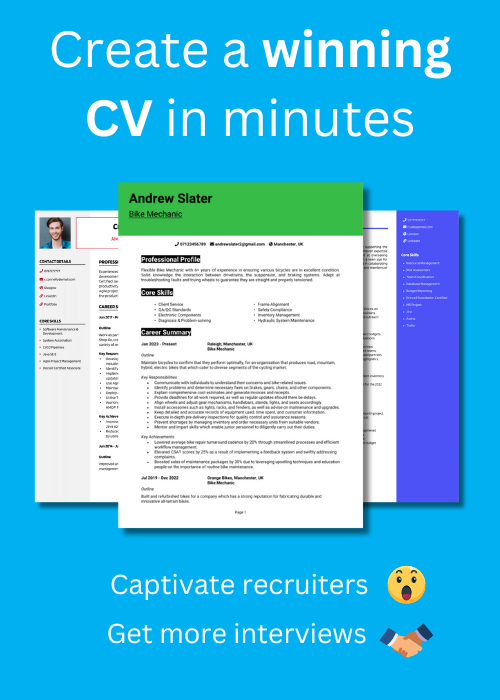

If you focus on the written content of your CV but ignore how it actually looks, your efforts could end up wasted.
No matter how suitable you are for the role, no recruiter wants to wast time squinting and trying to navigate a badly designed and disorganised CV.
Instead, make sure to organise your content into a simple structure and spend some time formatting it for ease of reading.
This will get you in the reader’s good books from the get-go!
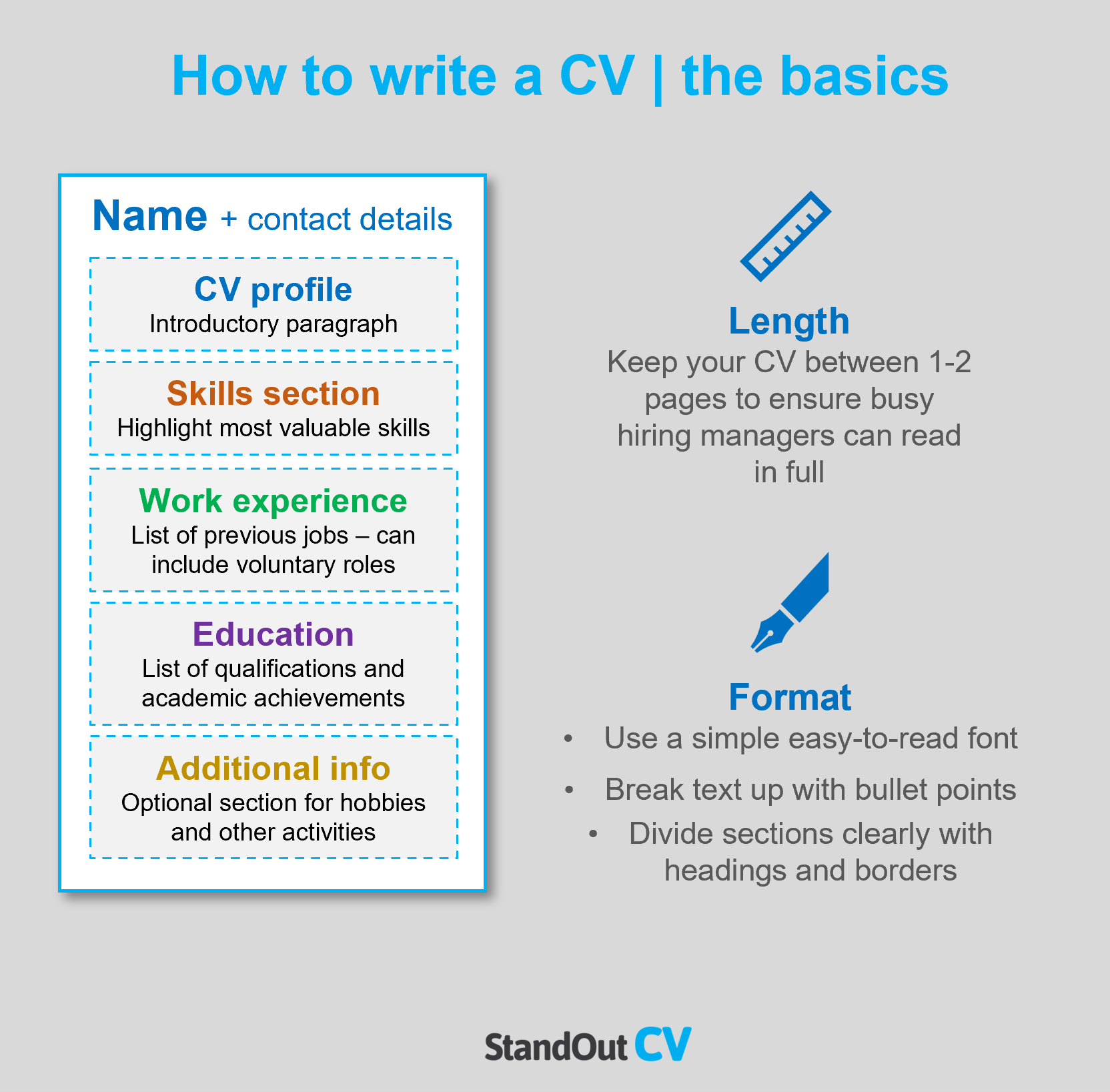
Break up your CV content into the following key sections:
Now I’ll go through exactly what to include in each of the above sections, so you can create a CV that impresses.
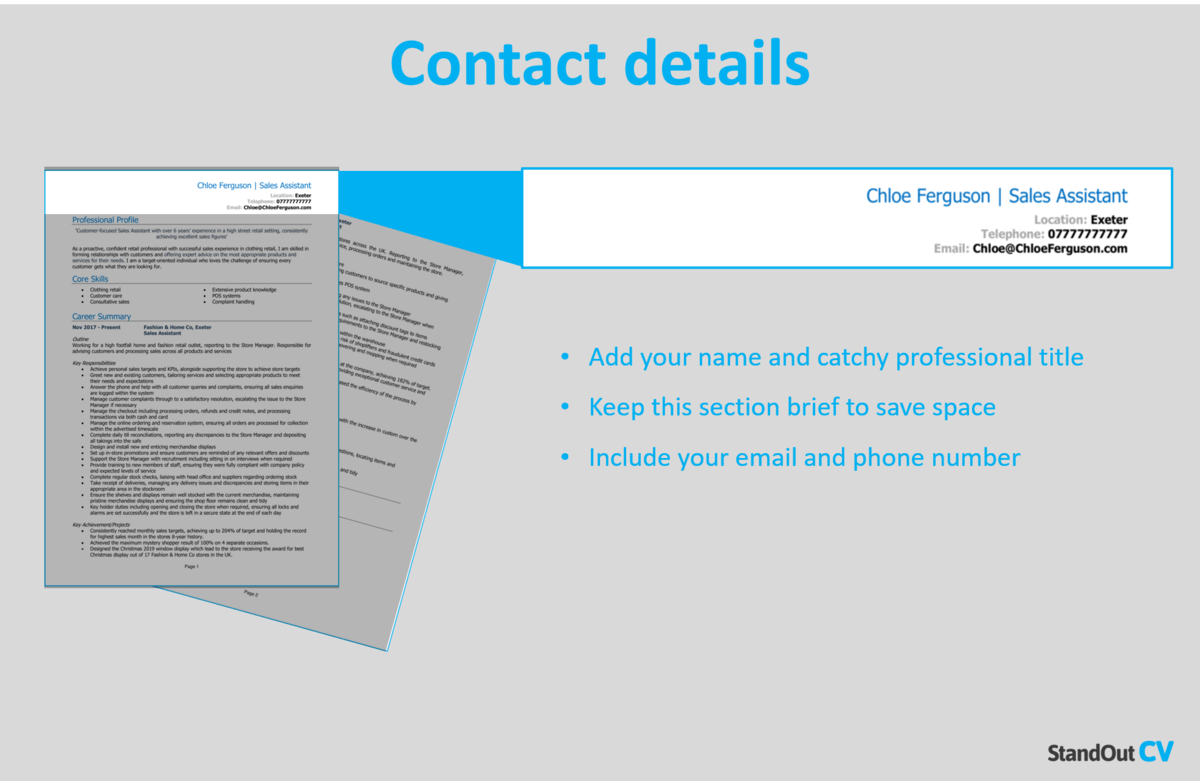
Begin by sharing your contact details, so it’s easy for employers to give you a call.
Keep to the basics, such as:
Grab the reader’s attention by kickstarting your CV with a powerful profile (or personal statement, if you’re a junior applicant).
This is a short introductory paragraph which summarises your sector skills, knowledge and experience.
It should paint you as the perfect match for the job description and entice recruiters to read through the rest of your CV.
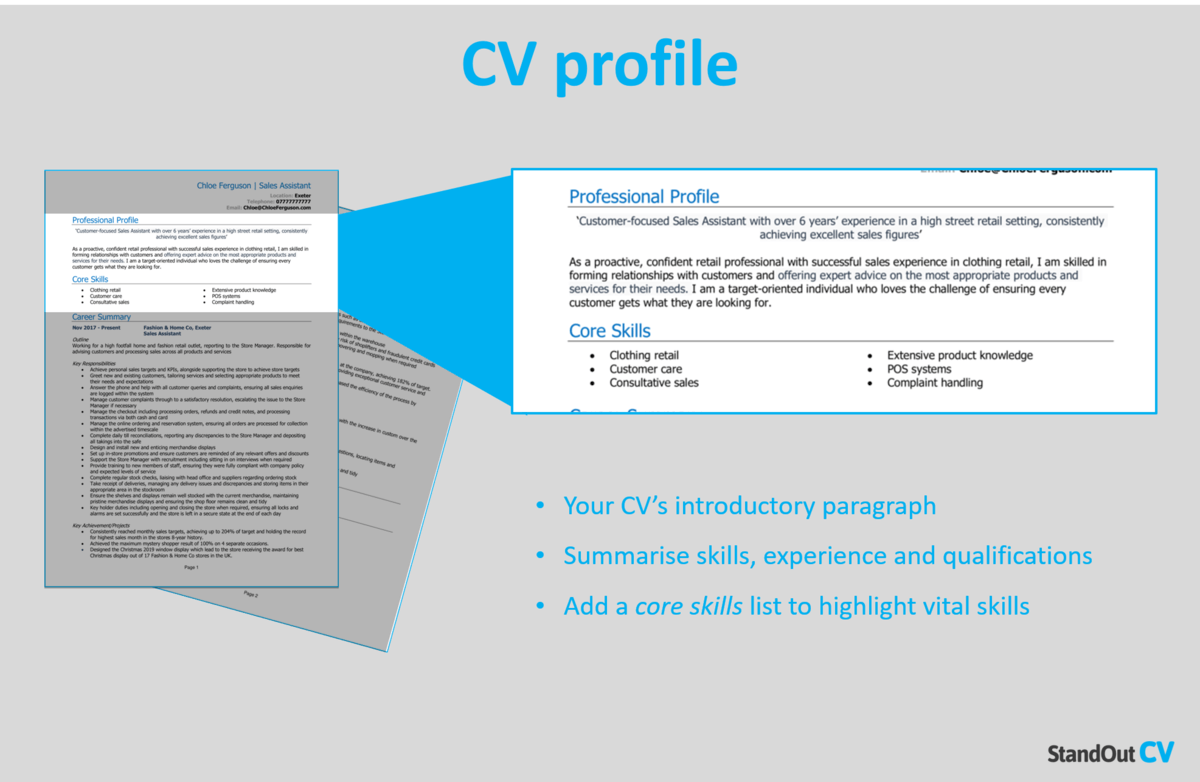
Tips to consider when creating your profile:
Quick tip: If spelling and grammar isn’t a strong point of yours, make use of a our quick-and-easy CV Builder It’ll help you avoid overlooking spelling mistakes and grammar errors and, best of all, is free!
Underneath your profile, create a core skills section. It should be made up of 2-3 columns of bullet points of your relevant skills.
Before you do this, look over the job description and make a list of any specific skills, specialisms or knowledge required.
Then, make sure to use your findings in your list. This will allow recruiters to instantly see that you’re a great match for the job.
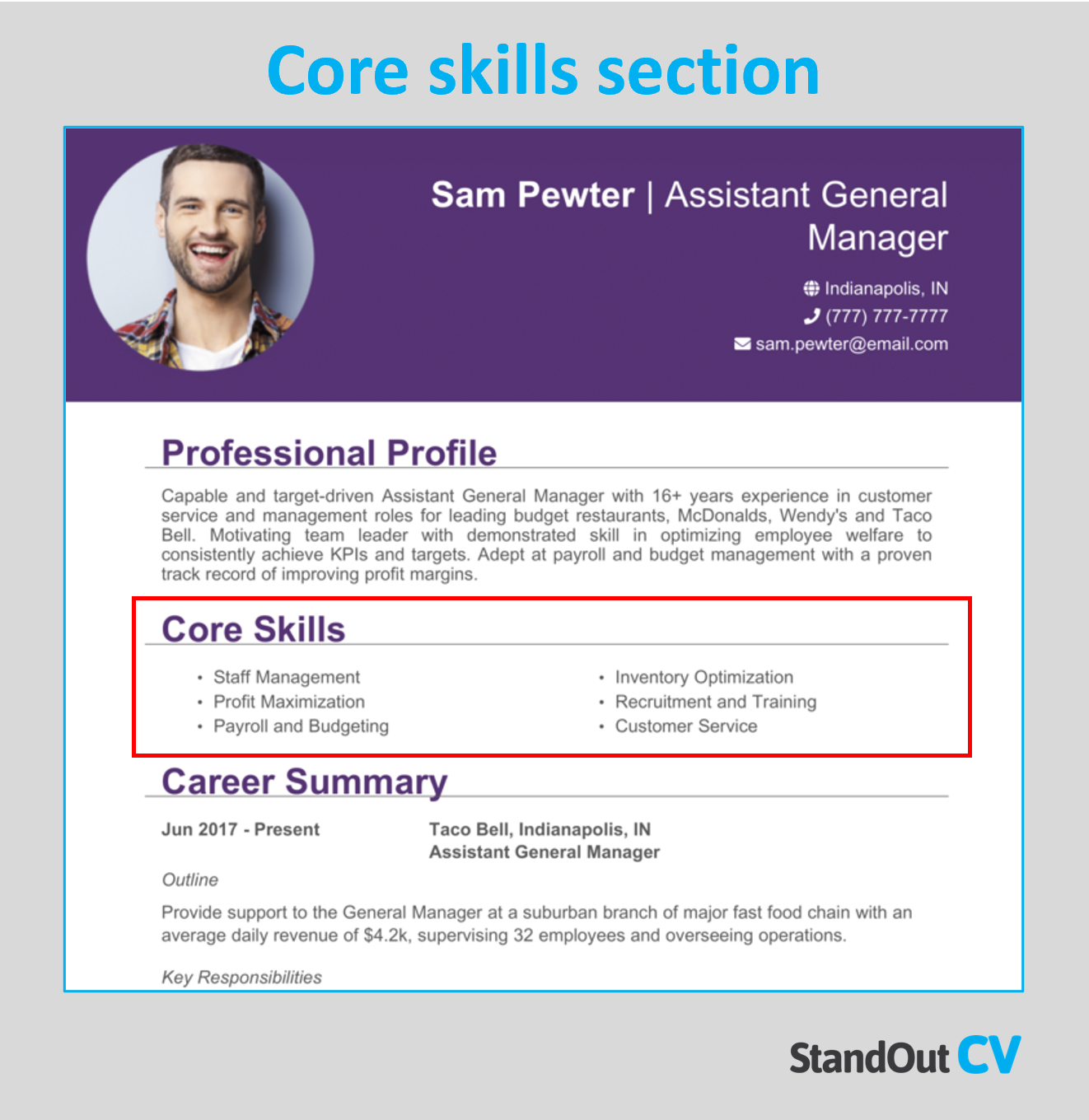


Now it’s time to get stuck into your work experience, which should make up the bulk of your CV.
Begin with your current (or most recent) job, and work your way backwards.
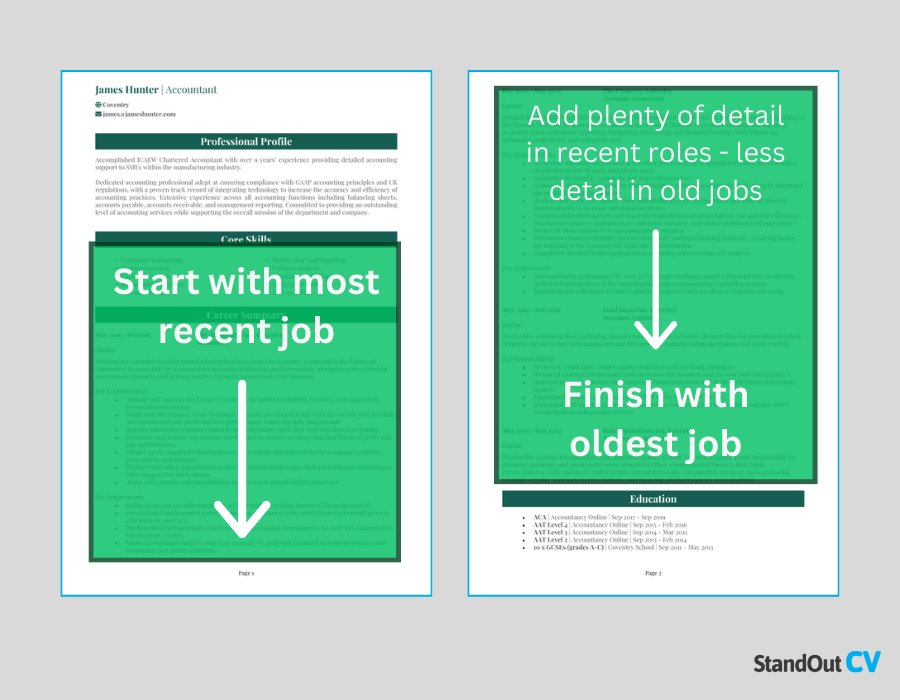
If you’ve got too much experience to fit onto two pages, prioritise space for your most recent and relevant roles.
Additionally, if you’ve worked as a self-employed contractor and have worked on countless projects, you can condense some of your projects into one.
For example: “Self-employed carpenter – 2000 – 2005”. Then, use your ‘duties and responsibilities’ section (as shown below) to discuss the types of work you completed during this period.
Your work experience section will be long, so it’s important to structure it in a way that helps recruiters to quickly and easily find the information they need.
Use the 3-step structure, shown in the below example, to achieve this:
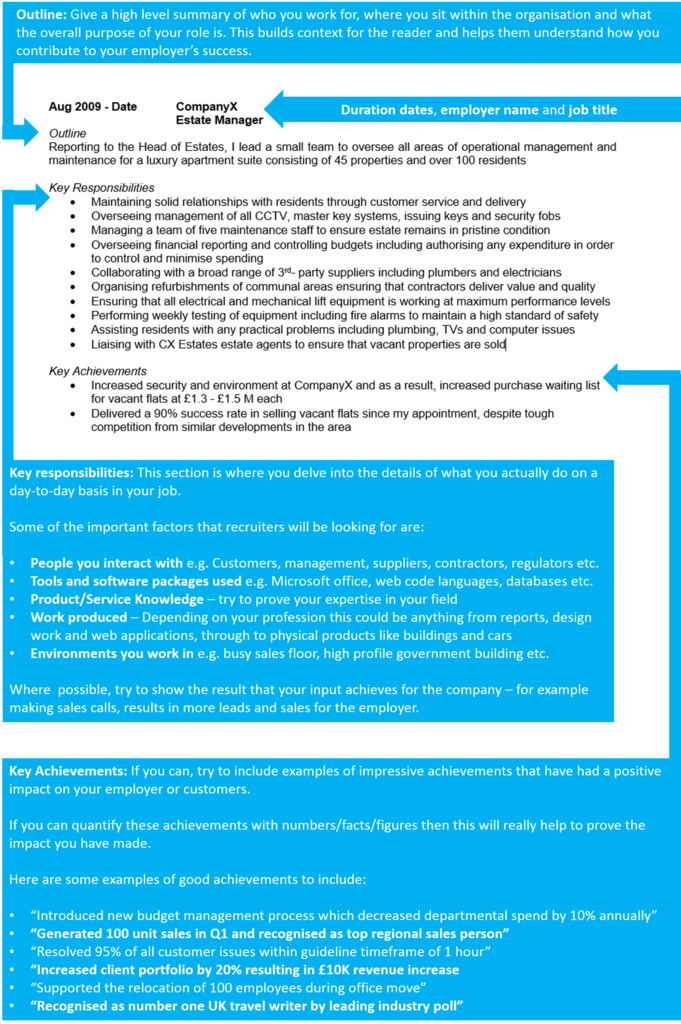
Outline
Kickstart with a brief summary of your role as a whole, as well as the type of company you worked for.
“Responsible for the planning and delivery of a range of commercial carpentry projects within budgetary guidelines for a construction company.”
Key responsibilities
Follow with a snappy list of bullet points, detailing your daily duties and responsibilities.
Tailor it to the role you’re applying for by mentioning how you put the target employer’s desired hard skills and knowledge to use in this role.
Key achievements
Finish off by showcasing 1-3 key achievements made within the role.
This could be anything that had a positive effect on your company, clients or customers, such as saving time or money, receiving exemplary feedback or an award, or increasing profits.
At the bottom of your CV is your education. You can list your formal academic qualifications, such as:
Make sure to showcase any specific carpentry qualifications, such as a BTEC or NVQ in carpentry/woodwork, too.
Note down the name of the qualification, the organisation at which you studied, and the date of completion.
Although this is an optional section, it can be useful if your hobbies and interests will add further depth to your CV.
Interests which are related to the sector, such as making furniture or cabinets, or which show transferable skills, such as being part of a sports team (teamwork), are well worth listing.
On the other hand, generic hobbies like “going out with friends” won’t add any value to your application, so are best left off your CV.


Although each company will require a slightly different skill set, there are core skills that will be required within any carpentry position:
Mechanical skills – Using hand and power tools, drilling, framing, making furniture and cabinets, sanding, sawing, etc…
Technical skills – Following blueprints, creating and reading technical drawings, elevations and building plans etc…
Numeracy – Budgeting, measuring, geometry etc…
Health & safety – Ensuring site safety is maintained, following health & safety rules and regulations, basic first aid etc…
Communication & interpersonal skills – Customer service, building relationships, working as part of a team etc…
Once you’ve written your CV, you should proofread it several times to ensure that there are no typos or grammatical errors.
If you’re unsure, use our quick-and-easy CV Builder – it’s really handy!
With a tailored punchy profile that showcases your relevant experience and skills, paired with well-structured role descriptions, you’ll be able to impress employers and land interviews.
Good luck with your next job application!